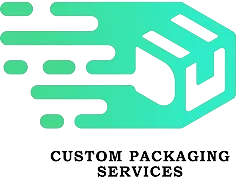Let’s have a look at what display packaging is before we get started with the instruction. Mainly, people refer to the display box as the product’s exterior. It contains the box’s material, images, and color and font combinations that you can print on a wrapping bottle, a wrapping sheet, or any other type of container.
A display box can be a helpful tool; otherwise, how would you transport, store, or display your goods? It is, nevertheless, far more significant. A well-designed custom display packaging can tell a story about the product. It provides a sensory experience for your customers, engaging them through sight, touch, and, depending on the product, fragrance.
All of these sensory experiences assist your customers in understanding the enclosed retail item, how to use it, and, most crucially, who should buy it.
In today’s post, custom packaging services will elaborate on how your packaging can tell a narrative and help you establish the brand image you desire in our comprehensive guide to custom display boxes.
3 Essential Questions
Before you begin designing custom display packaging boxes, you must first address three critical questions.
What is your product?
This should be a simple question to answer. What exactly are you attempting to sell? What is the size of the object? What material is it made of? Is it delicate?
Such inquiries will aid you in determining whether your product needs any logistical packaging procedures. A fragile product, for example, may necessitate strong packing. A product that is unusual or huge may not fit into pre-designed boxes, necessitating custom boxes to package it.

What is a buyer?
Is the product aimed at males or women, or is it a one-size-fits-all solution? Is it suitable for children? Is it primarily for adults? Does it have anything to do with environmental changes? Is it for a specific socio-economic group? Or is it a high-end item?
You should create a display box with the buyer in mind. Before you begin creating packaging for your target market, you must first define who it is. If you’re making a product for the wealthy, you’ll want to use a material that communicates that it’s a high-end item inside. Similarly, you do not want to waste your money on low-cost custom packaging services.
It is the most crucial question of all. So, do you want to sell your product online or at a physical location?
This question has a significant impact on the packaging of your goods. If you send your product to multiple locations, you may wish to design your packing differently. If you’re selling your product online, you’ll want to utilize more secure packing and avoid leaving too much room in the box, which could cause your product to rattle around and harm the stock.
The retail packaging, likewise, should be able to compete with other products on the market. The retail packaging is designed in a completely different way. Size, material, and elegance are all factors to consider.
Budgeting
Another crucial aspect of custom packaging boxes is budgeting. When you’re running low on cash, you’ll want to put a stop to your box production. You can do so by dividing your budgeting into two parts:
The one-time investment includes designing the box, box shipping, and other things for which you will pay only once unless you want to change your design entirely.
Material and labor costs describe investment per item. Each package will cost a set amount of money. That cost per box will cover whatever you want to put in the package.
Before you begin the design process, you must first evaluate the cost of your shipping boxes. Always keep in mind that cheaper isn’t always the best alternative. A small investment in the material can help you break into the mainstream with your goods.

Provide as much information as possible.
Your box should be able to provide the buyer with enough information. The content will represent a specific brand aesthetic, so make sure to include all relevant information.
Safety Instructions: If your product is possibly risky to youngsters, make sure you mention it. Give some guidelines on how to use it.
Barcode: The barcode isn’t the most glamorous aspect of the display boxes, but it is necessary. Barcodes aren’t only for looks; they play a critical role. Make sure the barcode is clear, concise, and scannable before printing it.
Manufacturer or Importer: you should include the name and address of the importer or manufacturer in your box. If a customer has a complaint about the product’s quality or simply wants further information. This is your chance to get the credit, so fill out the box with all of your information.
Final words
Your product’s packaging will define its market position. If your customers aren’t happy with the way the product looks on the outside, they aren’t going to care how high-quality the product is on the inside.


